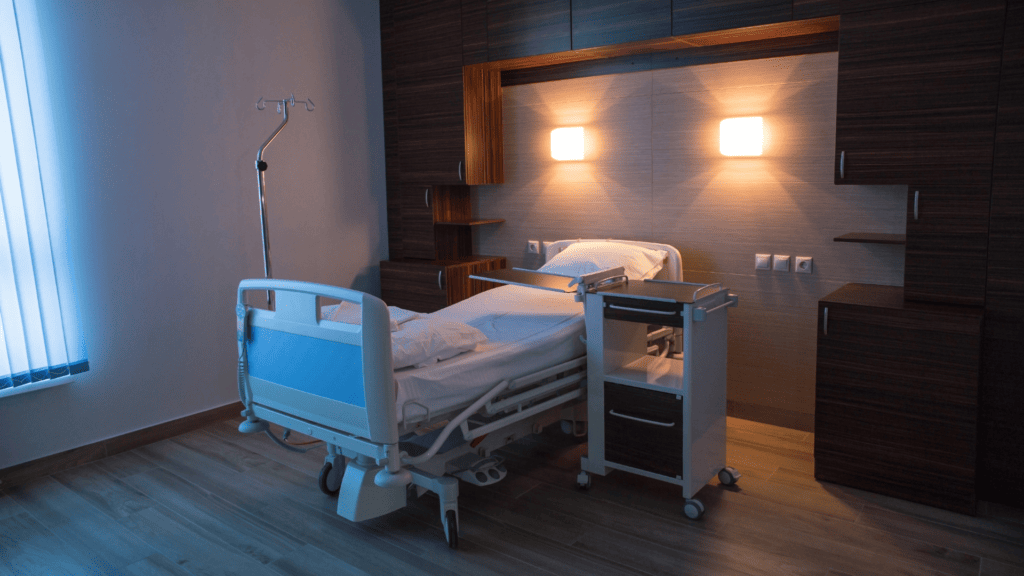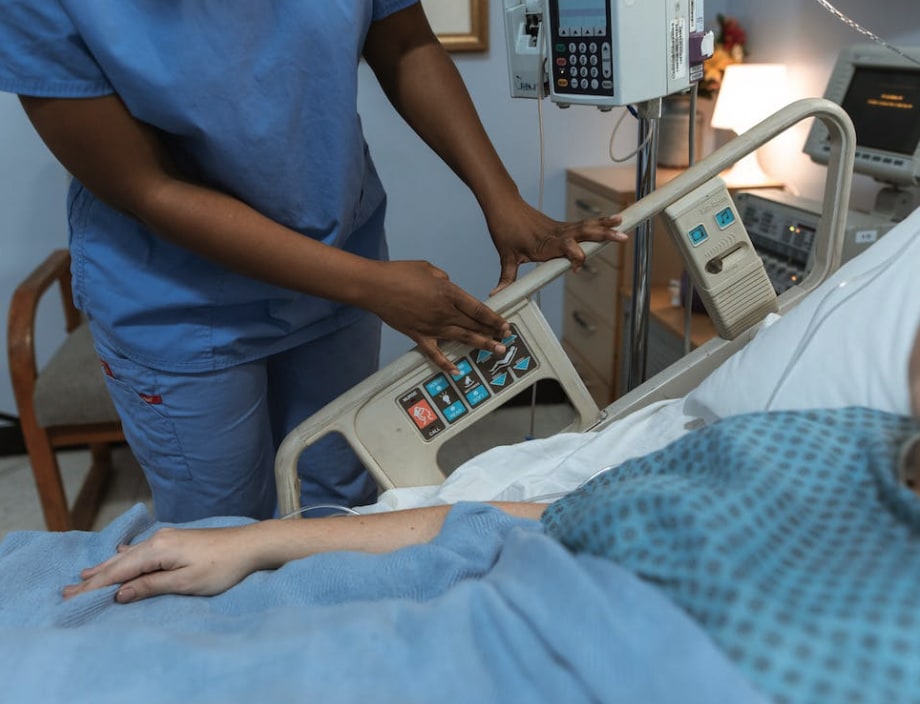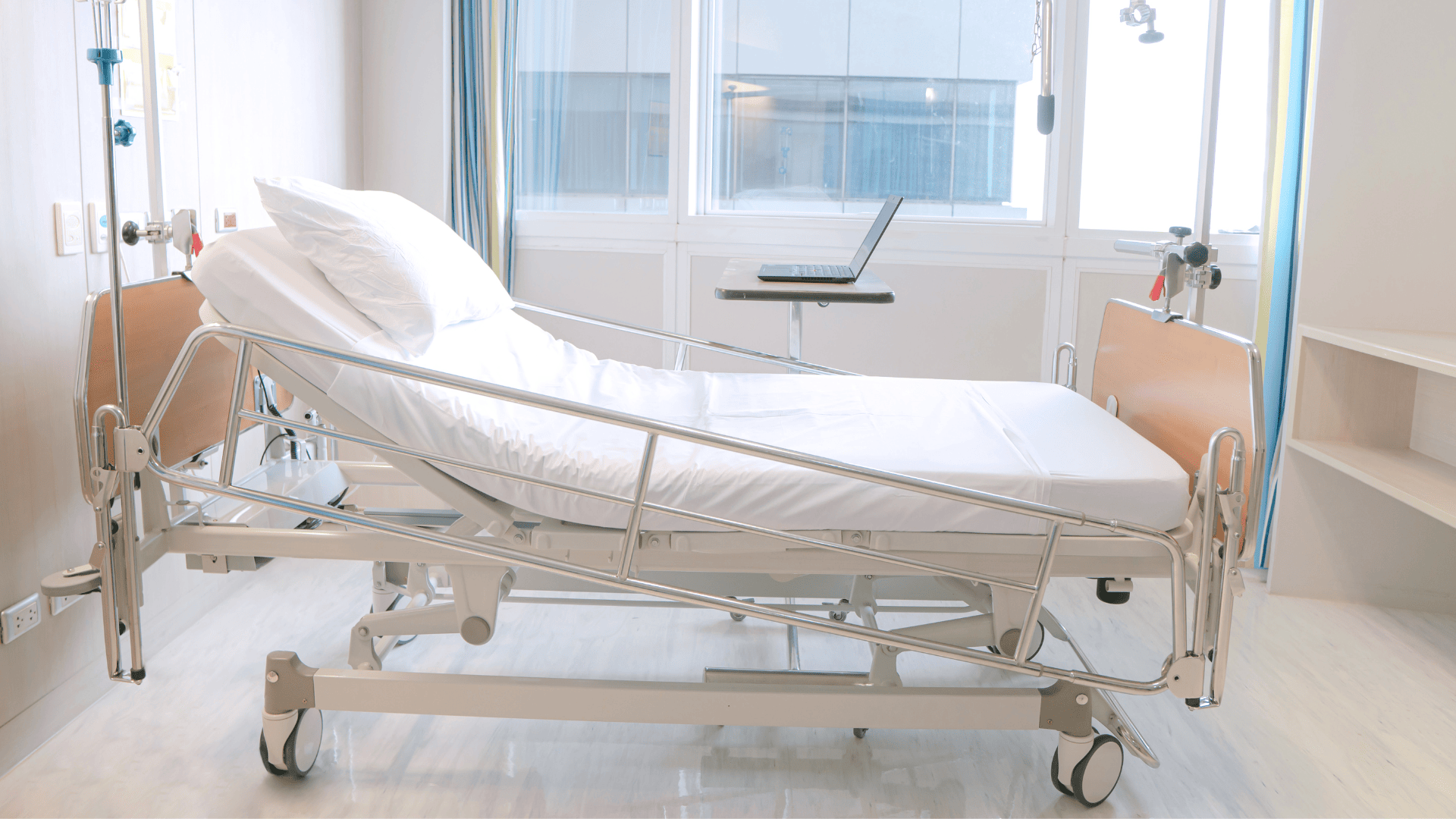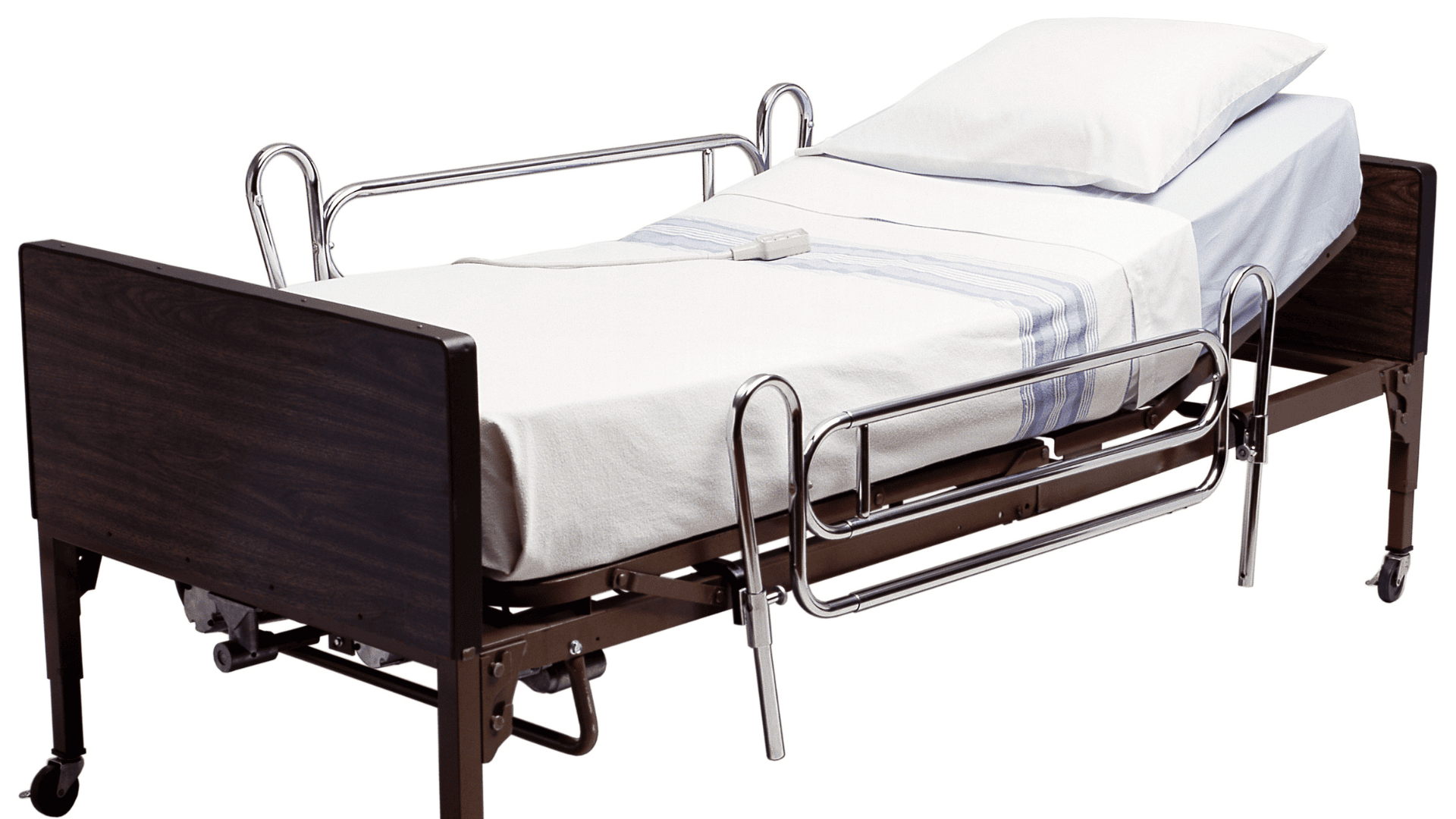The search for a hospital bed, whether for long-term or emergency use, can be stressful for anyone in need. Considering the variety of choices out there, careful consideration is required to pick the best one for you.
There are a number of considerations that should be made when shopping for a medical bed, whether it's intended for use in a home setting or a hospital. In this article, we'll discuss some of the most important aspects to look for in a medical bed, such as its portability, safety features, and level of comfort. We will discuss the various types of beds and what you should look for when making your final decision, including the advantages of medical beds for elderly care, the adaptability of adjustable care beds, and more.
Let's start with the basics; what are the various hospital bed options? It's important to understand the differences between the various types before settling on one. There are specific factors to think about when searching for a hospital bed for an elderly relative. When shopping for a new bed, it's important to prioritise comfort, usability, and security.
Choose the Right Type of Medical Bed
Selecting a medical bed should begin with thinking about the user's mobility needs. Choosing the right medical bed can be challenging; knowing the differences between the various options is crucial.
When shopping for a bed, it's important to think about a variety of mobility concerns. Can you get in and out of bed without assistance? Is a bed that lowers as you get out of it something you'd find useful? Can you maintain your posture when left alone? Do you have no ability to move at all? All of these factors and more will be taken into account by your local mobility expert as they help you choose a hospital bed.
Users with limited mobility who need frequent assistance may benefit more from a long-term care bed. Patients who are unable to turn a hand crank may benefit from sleeping on an electric bed. Patients who need help from a carer and are unable to use buttons or levers independently may benefit from other options, such as footboard attendant controls. Patients who are at risk of falling out of bed may benefit from a bed that can be lowered to a height of less than 10 inches (bed deck to floor height).
Fixed Medical Beds
Patients who are bedridden for long periods of time or who rarely need to change positions benefit most from fixed beds. These mattresses are strong and reliable in their support.
Manual Medical Beds
These types of medical beds are the norm. They don't use any power, are simple to operate, and won't break the bank. The bed's height, footrest, and headrest can all be adjusted with the turn of a hand crank. Manual medical beds are best for patients who will only need them temporarily or who require minimal medical support.
Semi-Electric Medical Beds
Semi-electric beds can be adjusted both manually and electrically, making them convenient for patients who require occasional position changes while under the care of a carer. Semi-electric medical beds have many advantages over their manual counterparts. The bed's height is adjusted manually, and an electric motor operates the headrest and footrest. People who have trouble moving around in bed or who need help doing so will benefit greatly from using one of these beds. They are simple to operate and don't break the bank.
Full-Electric Medical Beds
Adjusting the bed's height, head, and foot positions with a remote control is a convenient feature available on full-electric beds. Patients with mobility issues can benefit greatly from these beds because they can change their position on their own.
The electric motor on a full-electric medical bed allows for infinite adjustments. Patients who require prolonged medical assistance and those with limited mobility will find these beds to be an excellent option due to their electronically operated headrests, footrests, and bed heights. They are relatively expensive, however, and must be plugged into an electrical outlet to function.
Bariatric Medical Beds
Patients weighing more than 350 pounds require special medical beds called bariatric medical beds. Because of their extra width and length, these beds are great for patients who need extensive medical attention. Beds like these are typically operated electrically and feature extras like bed rails and pressure-relieving mattresses.
Essential Features to Look for
Medical beds, especially those used by the elderly, must adhere to the highest standards of safety. Here are some essential safety measures to take:
1. Side Rails
When a bed has side rails, the user is more secure and less likely to roll out of bed. It's a good idea to have lockable, movable side rails installed. Pads placed along full-length side rails can prevent loved ones from getting hurt in the event of a seizure. With the help of grab bars and half-length side rails, loved ones can safely rearrange the bed while maintaining easy access to personal items like television remotes. They're also great for keeping loved ones in place when getting in and out of bed. Safety rails and grab bars should be fastened firmly to the bed's frame.
2. Headboard & Footboard Options
There is a wide selection of styles and colours for hospital bed head and foot boards to ensure a perfect match with any existing decor. If a trapeze bar is to be used above the bed, the head and foot boards must be firmly attached to the frame. The footboard can also hold pumps for venous therapy or air mattresses.
3. Brake System
Brakes on a medical bed are essential for patient safety during transfers and position changes.
4. Size and Weight Capacity
Make sure the medical bed can safely support the user's weight by checking the manufacturer's specifications. When picking out a hospital bed for a loved one, one of the most crucial factors to consider is the bed's weight capacity. Excessive weight on the bed frame can cause it to collapse, which can result in serious injury. Bariatric beds can be as wide as 48 inches and can support weights of up to 750 pounds. Larger and heavier people can use them with ease. The increased weight limit and extra width of the bed could also allow for additional family members to join the patient and caretakers for comfort.
5. Bed Frame Movement
There are hospital bed frames that are permanently set at a certain height and those that can be moved up and down as needed. The ideal height for loved ones to get in and out of bed, and the optimal height for carers to provide assistance, may necessitate adjusting the bed frame to different heights. The mattress on a high-low bed can be lowered to the floor, as the bed's height can be adjusted from about 8 inches to 20 inches. If a thick mat is placed next to the bed, it can help those who have trouble getting up and may try to get up on their own without asking for help.
The Trendelenburg position involves laying on your back with your feet higher than your head. When lifting a loved one to the head of the bed, this can be a helpful aid. To assist a loved one in turning onto their side while keeping their head elevated, the reverse Trendelenburg position may be used. Some family members may benefit from this, especially if they use a feeding tube or have trouble breathing.
6. Emergency Controls
In the event of a power outage or other emergency, carers should be able to quickly lower a full-electric medical bed using emergency controls.
Comfort: The Key To A Restful Recovery
Patients who must spend long periods of time bedridden must have access to amenities that will help them feel at ease. To guarantee the highest level of relaxation while using the medical bed, keep the following in mind:
- Mattress Type: Make sure the mattress you decide on provides adequate support, pressure relief, and air circulation. Mattresses that relieve pressure like memory foam are currently all the rage. When looking for a hospital bed for an elderly person, the mattress is the most important factor to consider. Bedsores can be avoided and comfort levels can be maximised with the help of special features found on some mattresses, such as pressure relief and variable firmness. Purchase a high-quality mattress that suits your needs and is simple to maintain.
- Adjustable Positions: Choose a medical bed with separate adjustments for the head and the feet so that the patient can find the optimal position for sleeping and relaxing. The ability to adjust the height of a hospital bed is crucial for assisting the elderly into and out of the bed. Caretakers can adjust the height of the bed to ensure the safety of their elderly patients and ensure their comfort. Make sure the bed can be easily adjusted for height.
- Padding and Upholstery: To improve comfort and lessen the chance of pressure sores, it's best to look for beds with plenty of padding and plush upholstery.
- Cost: It is important to invest in a high-quality bed that offer greater comfort and safety for the elderly, but hospital beds can be expensive. It's not worth it in the long run to skimp on quality in order to save money.
Aged Care Beds: Addressing Specific Needs
Medical beds adapted to the needs of the elderly are available for use in residential care facilities. Extra comfort and safety features are commonly found in beds designed for the elderly.
Low-Height Beds
Beds for the elderly should be low to the ground to minimise the risk of injury from getting in and out of them.
Fall Prevention Systems
Some hospital beds for the elderly have sophisticated fall detection systems, such as sensors that notify staff if the user tries to get out of bed without assistance.
User-Friendly Controls
Beds used in senior living facilities must have simple controls so that residents can make their own adjustments without assistance from staff.
The Versatility of Adjustable Care Beds
Adjustable care beds are becoming more and more common because of the many different positions they can be put in. These beds have many advantages that make them a great option for use in hospitals and private homes. The primary benefit is that the bed can be easily adjusted to the user's prefered position, so they can get a good night's rest no matter what they have planned. Second, by allowing users to elevate their legs, adjustable care beds aid in improved circulation and reduce the risk of swelling and discomfort. Finally, these beds are highly regarded by carers because of the convenience they provide for treating patients. Adjustable beds make it easier on carers by allowing them to reposition patients without getting out of bed. Because of all their benefits, adjustable care beds are a must-have for any medical facility.
Don’t Forget About Delivery and Set-Up
Because of their size and weight, hospital beds require careful logistics planning prior to delivery and installation. Some retailers will include delivery and set up in the price, while others will charge extra.
When deciding on a hospital bed for home use, it's important to take into account a number of factors, including the patient's needs, the type of bed, the features, the cost, insurance coverage, and the logistics of delivery and set-up.
The health and happiness of patients, especially those in nursing homes, depend on the quality of the medical beds available to them. You can find the one that works best for the user by thinking about things like portability, security, and convenience. Prioritizing the right features, whether in a homecare adjustable bed or a medical bed for an elderly care facility, will improve patient care and satisfaction.
Always consult with medical professionals to make sure the chosen medical bed meets the individual's needs, and make sure to do your homework before settling on a particular model.
Conclusion
When searching for a hospital bed, it is crucial to consider factors such as portability, safety features, and comfort. There are various types of beds, including fixed, manual, semi-electric, full-electric, and bariatric.
Fixed medical beds are suitable for patients who are bedridden for extended periods or rarely need to change positions. Manual medical beds are simple to operate and don't require power, making them ideal for temporary or minimal medical support. Semi-electric beds can be adjusted manually and electrically, making them convenient for patients who need occasional position changes. Full-electric beds offer remote control adjustments, making them ideal for patients with mobility issues and those with limited mobility.
Bariatric medical beds are suitable for patients weighing over 350 pounds, as they are electrically operated and feature extras like bed rails and pressure-relieving mattresses. These beds are ideal for patients who need extensive medical attention and are typically operated electrically.
In conclusion, choosing the right hospital bed depends on the user's mobility needs, comfort, usability, and security. By considering factors such as portability, safety features, and comfort, patients can make an informed decision about their hospital bed choice. Medical beds, particularly those used by the elderly, must adhere to the highest standards of safety. Key safety measures include side rails, headboard and footboard options, and a brake system. Side rails provide security and reduce the risk of rolling out of bed, while grab bars and half-length side rails allow for easy access to personal items and personal items. Headboard and footboard options can be customized to match existing decor, and the footboard can hold pumps for venous therapy or air mattresses.
The bed's weight capacity is crucial, as excessive weight can cause the bed frame to collapse, resulting in serious injury. Bariatric beds can be as wide as 48 inches and support weights of up to 750 pounds, allowing larger and heavier people to use them with ease. Bed frame movement can be adjusted to suit different heights, and thick mats can help those with difficulty getting up.
The Trendelenburg position, which involves laying on the back with feet higher than the head, can be helpful for lifting a loved one to the head of the bed. The reverse Trendelenburg position can assist a loved one in turning onto their side while keeping their head elevated. Emergency controls should be available for full-electric medical beds in case of power outages or other emergencies.
Comfort is essential for patients who spend long periods of time bedridden. Choose a mattress that provides adequate support, pressure relief, and air circulation, with memory foam mattresses being popular for their pressure relief. When choosing a hospital bed for an elderly person, consider several factors, including the mattress, adjustable positions, padding and upholstery, and cost. A high-quality mattress is essential for avoiding bedsores and maximizing comfort levels. Adjustable positions, such as head and foot adjustments, are crucial for assisting the elderly in and out of the bed. Additionally, beds with ample padding and plush upholstery can improve comfort and reduce pressure sores.
Cost is another important factor to consider when choosing a hospital bed. High-quality beds offer greater comfort and safety for the elderly, but they can be expensive. Investing in high-quality beds is essential for long-term satisfaction.
Medical beds designed for the elderly are available for residential care facilities, offering extra comfort and safety features. Low-height beds minimize injury risk, while fall prevention systems can help prevent falls. User-friendly controls are essential for easy adjustments without staff assistance.
Adjustable care beds are becoming more common due to their versatility and convenience. They can be easily adjusted to the user's preferred position, improve circulation, reduce swelling and discomfort, and provide convenience for carers. Delivery and set-up are also important factors to consider.
The health and happiness of patients, especially in nursing homes, depend on the quality of medical beds available. Prioritizing features like portability, security, and convenience is crucial for patient care and satisfaction. Consult with medical professionals and do your homework before settling on a particular model.
Content Summary:
- The search for a hospital bed, whether for long-term or emergency use, can be stressful for anyone in need.
- Considering the variety of choices out there, careful consideration is required to pick the best one for you.
- There are a number of considerations that should be made when shopping for a medical bed, whether it's intended for use in a home setting or a hospital.
- In this article, we'll discuss some of the most important aspects to look for in a medical bed, such as its portability, safety features, and level of comfort.
- We will discuss the various types of beds and what you should look for when making your final decision, including the advantages of medical beds for elderly care, the adaptability of adjustable care beds, and more.
- Let's start with the basics; what are the various hospital bed options?
- It's important to understand the differences between the various types before settling on one.
- There are specific factors to think about when searching for a hospital bed for an elderly relative.
- When shopping for a new bed, it's important to prioritise comfort, usability, and security.
- Selecting a medical bed should begin with thinking about the user's mobility needs.
- Choosing the right medical bed can be challenging; knowing the differences between the various options is crucial.
- When shopping for a bed, it's important to think about a variety of mobility concerns.
- All of these factors and more will be taken into account by your local mobility expert as they help you choose a hospital bed.
- Users with limited mobility who need frequent assistance may benefit more from a long-term care bed.
- Patients who are bedridden for long periods of time or who rarely need to change positions benefit most from fixed beds.
- These types of medical beds are the norm.
- Manual medical beds are best for patients who will only need them temporarily or who require minimal medical support.
- Semi-electric beds can be adjusted both manually and electrically, making them convenient for patients who require occasional position changes while under the care of a carer.
- Semi-electric medical beds have many advantages over their manual counterparts.
- The bed's height is adjusted manually, and an electric motor operates the headrest and footrest.
- Adjusting the bed's height, head, and foot positions with a remote control is a convenient feature available on full-electric beds.
- Patients with mobility issues can benefit greatly from these beds because they can change their position on their own.
- The electric motor on a full-electric medical bed allows for infinite adjustments.
- Patients who require prolonged medical assistance and those with limited mobility will find these beds to be an excellent option due to their electronically operated headrests, footrests, and bed heights.
- Patients weighing more than 350 pounds require special medical beds called bariatric medical beds.
- Because of their extra width and length, these beds are great for patients who need extensive medical attention.
- Medical beds, especially those used by the elderly, must adhere to the highest standards of safety.
- Here are some essential safety measures to take: Side Rails When a bed has side rails, the user is more secure and less likely to roll out of bed.
- It's a good idea to have lockable, movable side rails installed.
- With the help of grab bars and half-length side rails, loved ones can safely rearrange the bed while maintaining easy access to personal items like television remotes.
- Safety rails and grab bars should be fastened firmly to the bed's frame.
- There is a wide selection of styles and colours for hospital bed head and foot boards to ensure a perfect match with any existing decor.
- If a trapeze bar is to be used above the bed, the head and foot boards must be firmly attached to the frame.
- Brakes on a medical bed are essential for patient safety during transfers and position changes.
- Make sure the medical bed can safely support the user's weight by checking the manufacturer's specifications.
- When picking out a hospital bed for a loved one, one of the most crucial factors to consider is the bed's weight capacity.
- Excessive weight on the bed frame can cause it to collapse, which can result in serious injury.
- The ideal height for loved ones to get in and out of bed, and the optimal height for carers to provide assistance, may necessitate adjusting the bed frame to different heights.
FAQs About Choosing Medical Bed
Adjustable care beds are specialized beds designed with multiple moving parts that allow users to adjust the bed's height, head, and foot positions. This feature sets them apart from regular beds, as it provides personalized comfort and various positioning options for enhanced relaxation and support during activities like reading, watching TV, or eating.
Absolutely! Adjustable care beds are highly versatile and perfectly suited for homecare use. They offer great benefits for individuals who require additional comfort and support due to medical conditions, aging, or limited mobility. With adjustable features, users can independently find their ideal sleeping and resting positions, contributing to their overall well-being.
Elevating the legs using the adjustable feature of care beds can significantly improve blood circulation. By raising the legs above the heart level, blood flow is enhanced, reducing the risk of swelling and discomfort in the lower extremities. This feature is especially beneficial for individuals who may experience circulatory issues or leg-related discomfort.
Yes, adjustable care beds are designed not only to benefit the users but also to make caregiving tasks easier for caregivers. The ability to adjust the bed's position allows caregivers to reposition patients more conveniently, reducing strain and physical effort. This feature is particularly valuable for caregivers who regularly assist individuals with limited mobility or medical conditions that require frequent repositioning.
While adjustable care beds can work with a variety of mattresses, it is recommended to choose a mattress that complements the bed's adjustable features. Memory foam and pressure redistribution mattresses are popular choices as they conform to the user's body and provide adequate support. It's essential to ensure that the selected mattress is compatible with the bed's adjustability for optimal comfort and functionality.



